Pad See Ew – the popular Thai stir fried noodles straight from the streets of Thailand made at home! While Pad Thai is sweeter and nuttier, Pad See Ew is salty, balanced with a touch of sour and a wonderful chargrilled flavour which you can create at home!
This is a reader-favourite recipe included by popular demand in my debut cookbook “Dinner”!
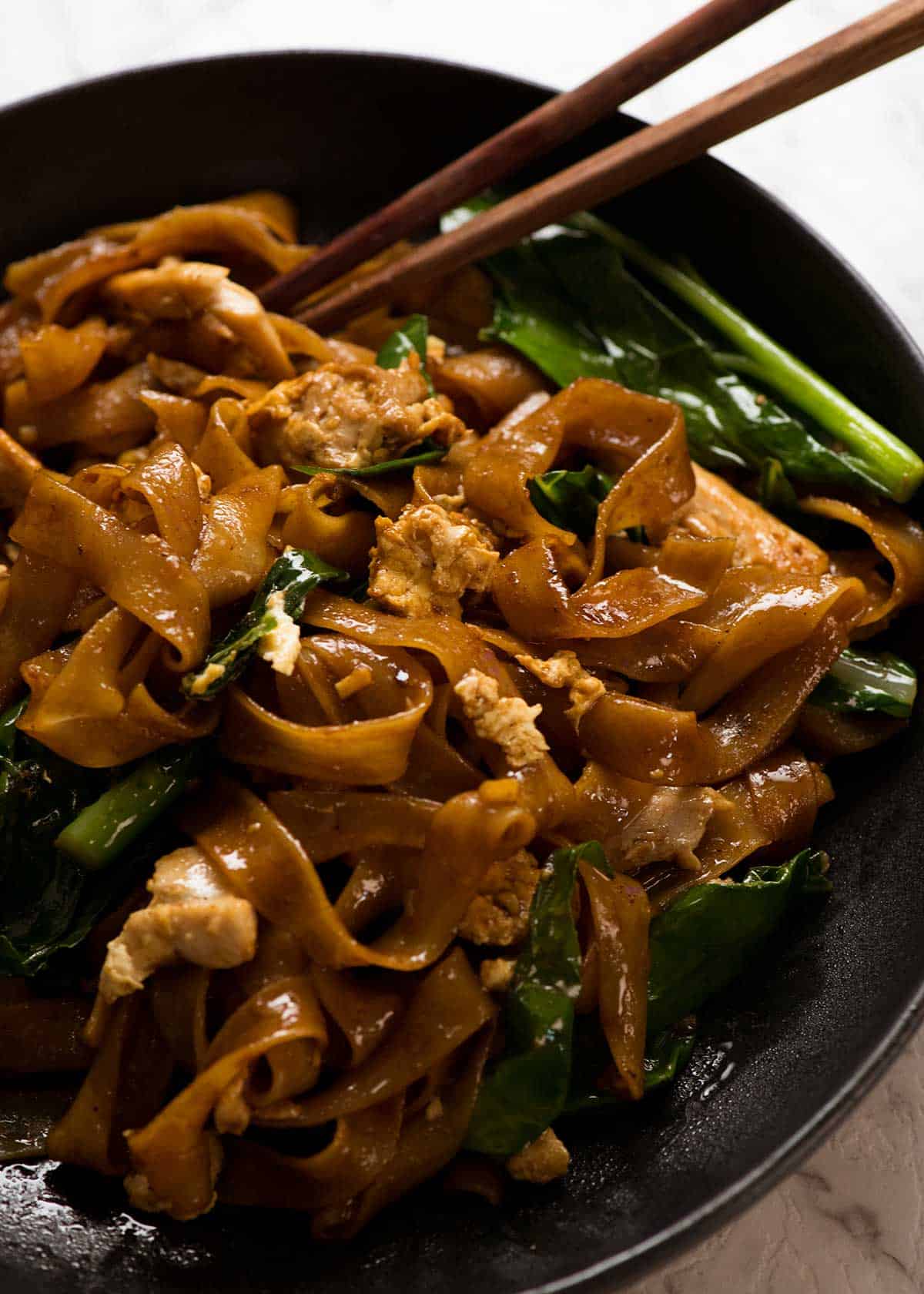
Pad See Ew
Pad See Ew, which means “stir fried soy sauce noodles”, is an extremely popular Thai street food meal and one of the most popular noodles dishes at Thai restaurants here in Australia.
Making a great Pad See Ew at home simply comes down to two things:
The right sauce. Basic recipes online will instruct you to use little more than just soy sauce and sugar. It takes a little more than that!
Caramelising the noodles – Getting a little caramelisation on the noodles makes all the difference between an “ok” and “wow, it’s JUST like you get at restaurants!”.
The trick? Remove the stir fry ingredients. Cook the noodles with sauce separately. Less stuff in the wok (or skillet) = easier to caramelise the noodles. At least, at home. If you’ve got a giant restaurant wok burner, you don’t need to do the noodles separately!

What goes in Pad See Ew
I can’t remember where I originally got the recipe from. Probably from David Thompson, the famous Australian chef who has dedicated his life to mastering the art of Thai cooking. I’ve made it so many times over the years, I can almost make it with my eyes closed. (Not really….but you know what I mean!)
So I had to actually measure the ingredients properly to share the recipe!
1. Pad See Ew Sauce ingredients
Pad See Ew has a sweet-savoury-touch-of-sour flavour, and this is made with a combination of the following ingredients:

Dark soy sauce – For flavour and staining the noodles a dark brown.
Ordinary or light soy sauce – For seasoning (salt) and a bit of flavour. Most of the flavour comes from the oyster sauce and dark soy sauce. More on different soy sauces and when you can substitute with what in this About Soy Sauces post.
Oyster sauce – Key ingredient, it’s like 10 difference sauces mixed up in one bottle!
Vinegar – To balance the sweet and savoury. Some form of sour is a key ingredient in South East Asian cooking!
Sugar – For sweetness.
2. Pad See Ew ingredients
And here are the other ingredients for Pad See Ew:

Noodles – Pad See Ew is traditionally made with Sen Yai, which are wide, thin fresh rice noodles that are not easily accessible. Even most Asian stores in Sydney do not sell them – you usually need to go to a Thai grocery store.
So it is perfectly acceptable, and just as delicious, to make them with any wide flat rice noodles. I use dried rice noodles labelled as “Pad Thai” Rice Noodles (pictured below) because they are the widest available at the supermarket.
Once rehydrated, they’re essentially Sen Yai Noodles – just not quite as wide.
Chinese Broccoli / Gai Lan – This is a key authentic ingredient in Pad See Ew. Otherwise known as Gai Lan or Kai lan, it’s leafy and looks quite different to broccoli, but you’ll notice a similarity in the texture of the stems (hence the name).
If you can’t find it, just sub with other Asian greens, or a combination of broccoli or broccolini + spinach.
Chicken and egg – Feel free to use other proteins if you wish. But chicken is by far the most popular.
How to make Thai Stir Fried Noodles
Usually when making stir fried noodles, we toss everything together in one big pan or a wok.
But for Pad See Ew made at home, I do things differently to best replicate a restaurant flavour and minimise noodle breakage:
Cook chicken and vegetables first, then remove
Add noodles and sauce, toss to caramelise (just 15 seconds), then add chicken and vegetables back in.
Reason: A signature flavour in Pad See Ew is the caramelisation of the noodles. Restaurants and street vendors achieve this with super powered gas stoves with fiery heat that you’ll never find in a home kitchen. The only way to replicate that caramelisation on the noodles on a home kitchen stove is to declutter the wok and cook the noodles separately – the noodles will caramelise in 15 seconds.
The other reason is that rice noodles break if you toss them too much. Doing the two-stage toss makes it much easier and faster to disperse the sauce and bring the Pad See Ew together.
Trust me on this point. I’ve made a LOT of Pad See Ew at home in my time, and the two-stage toss it the easiest and most effective technique!

Garlic, chicken and Chinese broccoli STEMS first – Using either a wok or large skillet set over high heat, heat the oil then sauté the garlic until it goes light golden. Add the chicken then once it mostly changes from pink to white, add the Chinese broccoli stems which take longer to cook than the leafy part.
Once the chicken is cooked (it should only take 2 to 3 minutes), toss the Chinese broccoli leaves in and cook for 30 seconds or so just until wilted.
Push everything to the side to make room to scramble the eggs on the side. This is the traditional Thai way of scrambling eggs in Pad See Ew!
Crack egg straight into the wok.
Scramble egg – Then mix to scramble it. Speed is of the essence here – we want scrambled egg not a sunny side up egg!

Empty wok – Remove the chicken and vegetables onto plate. As mentioned above, the best way to cook Pad See Ew at home is to cook the noodles separately so we can get some nice caramelisation on them. If we don’t do this, then the noodles just stew instead of caramelising.
Add noodles and sauce into the wok.
Toss quickly for 1 to 1 1/2 minutes until the sauce is dispersed throughout the noodles and you see some caramelisation on the edges.
PRO TIP: You want to be quick here because the longer and more you toss, the more noodle breakfast you have. You’ll notice restaurants typically toss the noodles in the wok without using a wooden spoon or other tool for stirring – this too helps to minimise noodle breakage.
A note on Noodle Breakage – That said, you WILL get some noodle breakage, and that is normal / perfectly acceptable. Ever notice how the wide, flat noodles in Pad See Ew served at Thai restaurants are not long strands? That’s just the way it is. In fact, traditionally, Pad See Ew is served in Thailand with a FORK or spoon instead of noodles for ease of eating.
Add chicken and veg back in – Once the noodles are caramelised, add the chicken and vegetables back in. Give it a quick toss just to disperse, then serve!

As with all stir fries, once you start cooking, it moves very fast! So have everything prepared and ready to throw into the wok because there’s not time to be scrambling around the kitchen!
If you want to add a fresh side, try this Asian Slaw – it’s a great all rounder that goes with all Asian foods. – Nagi x
Watch how to make it
This recipe features in my debut cookbook Dinner. The book is mostly new recipes, but this is a reader favourite included by popular demand!
Hungry for more? Subscribe to my newsletter and follow along on Facebook, Pinterest and Instagram for all of the latest updates.

Pad See Ew – Thai Stir Fried Noodles
Ingredients
Noodles
- 200g / 7 oz dried wide rice stick noodles , or 15 oz / 450g fresh wide flat rice noodles (Sen Yai) (Note 1)
Sauce
- 2 tsp dark soy sauce (Note 2)
- 1 1/2 tbsp oyster sauce
- 1 tbsp light soy sauce (or all purpose, Note 3)
- 2 tsp white vinegar (plain white vinegar)
- 2 tsp sugar (any type)
Stir Fry
- 3 tbsp peanut or vegetable oil , separated
- 2 cloves garlic cloves, very finely chopped
- 1 cup / 150g / 5oz chicken thighs (boneless, skinless), sliced (Note 4)
- 1 large egg
- 4 stems Chinese broccoli (Note 5)
Instructions
Preparation:
- Chinese Broccoli – trim ends, cut into 7.5cm/3" pieces. Separate leaves from stems. Cut thick stems in half vertically so they're no wider than 0.8cm / 0.3" thick.
- Noodles – Prepare according to packet directions and drain. Time it so they’re cooked just before using – do not leave cooked rice noodles lying around, they break in the wok.
- Sauce – Mix ingredients until sugar dissolves.
Cooking:
- Heat oil: Heat 1 tbsp oil in a very large heavy based skillet or wok over high heat.
- Cook garlic and chicken: Add garlic, cook 15 seconds. Add chicken, cook until it mostly changes from pink to white.
- Chinese broccoli STEMS: Add Chinese broccoli stems, cook until chicken is almost cooked through.
- Chinese broccoli LEAVES: Add Chinese broccoli leaves, cook until just wilted.
- Scramble egg: Push everything to one side, crack egg in and scramble.
- REMOVE chicken from wok: Remove everything in the wok onto a plate (scrape wok clean).
- Caramelise noodles: Return wok to stove, heat 2 tbsp oil over high heat until it starts smoking (HOT is key!). Add noodles and Sauce. Toss as few times as possible to disperse Sauce and make edges of noodles caramelise – about 1 to 1 1/2 minutes.
- Add chicken back in: Quickly add chicken and veg back in, and toss to disperse. Serve immediately!
Recipe Notes:
Nutrition Information:
Originally published 2014, updated 2016. Updated over the course of the years with improved photos, the addition of ingredients and process photos as well as a recipe video. Recipe also updated with a more effective cooking method – cooking the ingredients in two batches. No change to ingredients, but yields a better caramelisation and easier to cook – read in post for explanation.
MORE THAI TAKEOUT FAVOURITES
Love noodles? Me too! See my entire Noodle recipes collection.
Life of Dozer
When Dozer ate a VERY spicy piece of chilli biltong!!





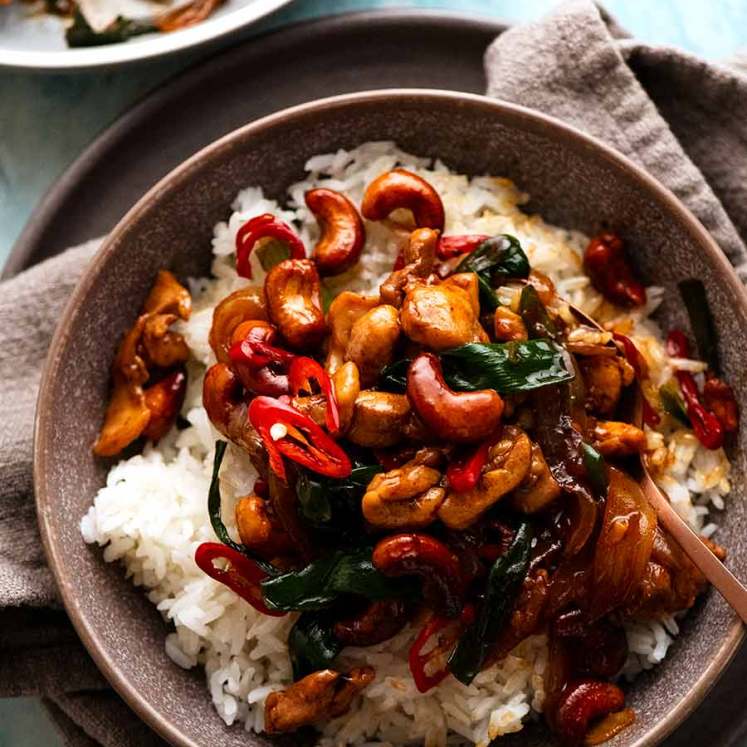





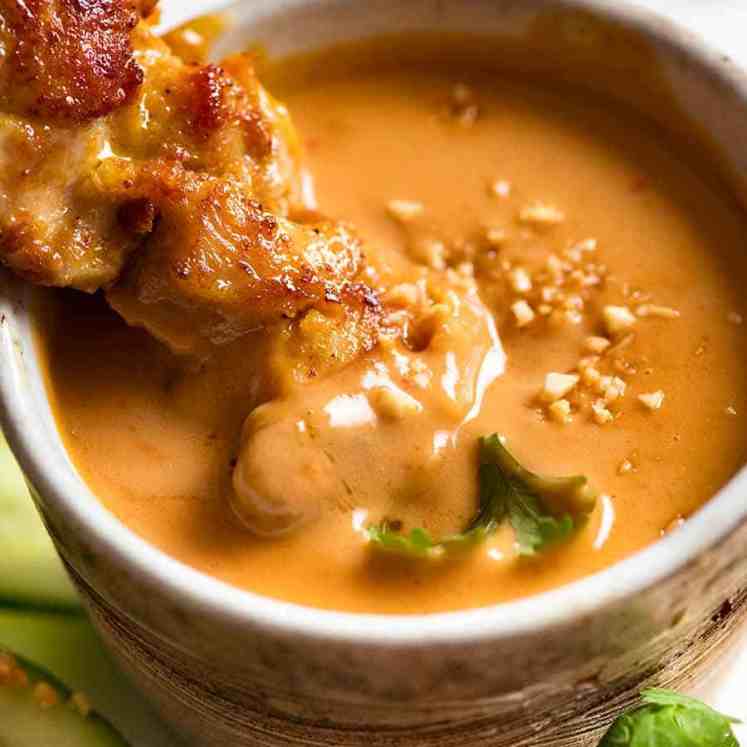
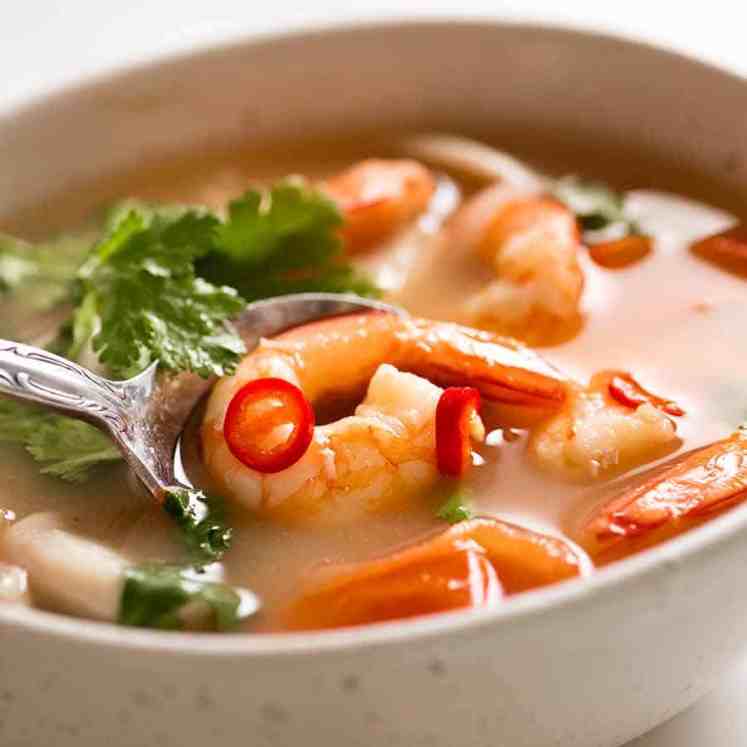


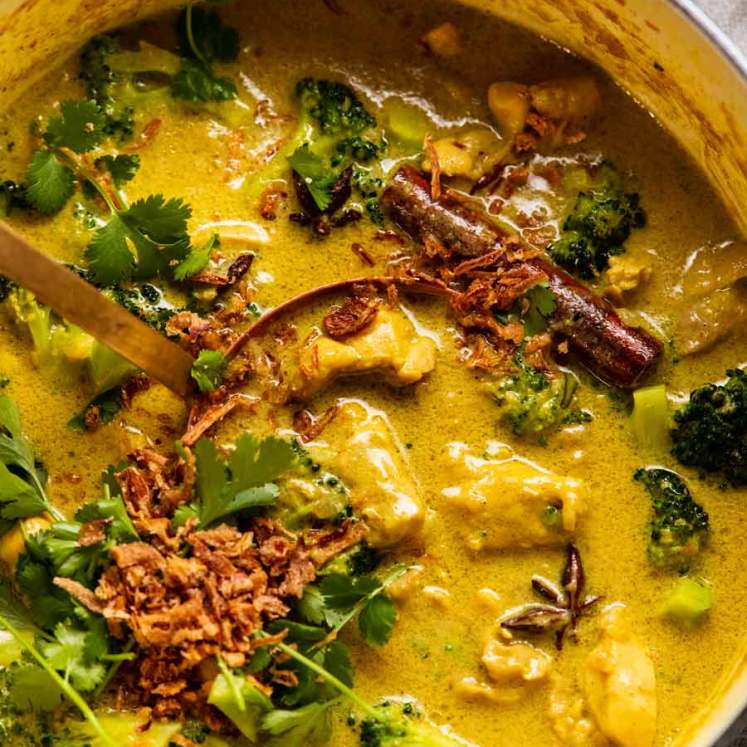

We love this recipe however I do make more sauce as the sauce ratio seemed a bit off the first time I made it. I make it in a non stick electric wok as I don’t have a gas stove top. Noodles caramelise perfectly. I also velvet the chicken (because why not!) and add bamboo that I’ve cut into match sticks just before serving. I’ve made it with both Chinese broccoli and broccolini, both varieties are absolutely delicious!
Love this recipe, so easy to follow and so quick to make. I’ve made it with chicken and prawn with prawn being the favourite. Serves my partner and me who eats a smaller size plus leftovers for lunch.
Hi Nagi, I am wanting to make this for dinner for my family and I. Will this serve 4 people or do I need to alter the servings?
Hey there, use the scale at the top of the recipe to move to 4 servings and it will give you the amount to buy/ what it will make 🙂
This dish ticked all the boxes for me: tasty and quick and I could use the remaining vegetables in my fridge. I used Cock rice noodles and they worked perfectly (NZ) Many thanks Nagi
hi Nagi
To tell the truth, I’m a bit nervous about making this one. The idea of caramelising the noodles just serves to remind me of the problems I always have with noodles sticking to the wok.
I’ve tried everything – cooking the noodles less, drying them more, having the wok cooler, having it hotter… I’ve even tried using slightly excessive amounts of oil (although I’d prefer not to do this).
My wok isn’t that of a master Asian chef, but I think it’s not too badly conditioned after a couple of years of regular use and care. My wok burner is super-powerful – for outdoor use only, so I can certainly get the heat if I need it.
What the heck am I doing wrong?
This actually came out really wel for me, although I was skeptical half way through. I was glad I got the wide noodles, that was the best part of the dish
I’m a huge fan but this recipe was a rare miss. As other commenters have said, the sauce to noodle ratio seems off and underwhelming. I’ll try with more sauce next time!
Soak the rice noodles in water for 1-24 hrs before making meal. Drain and cover in the sauce for 10-15 mins. Then throw them right in the wok and cook them. They won’t break and they are cooked to perfection. Great recipe! Taste just like a real restaurant 😋
Dont stress the broken noodles, just makes it more delish! Tastes so much like the local thai but better by a country mile
So good! Kids didn’t even realise it was home made and not from our local Thai! I used to rice paper hack to make the noodles haha!
So good!!! I just love your Asian Takeout recipes 🙂 I calculated it, and I spend about 1/3 the price making it at home versus picking it up at the restaurant! Win!! I made this with tofu and broccolini and Added some crushed red pepper to this one 🙂
Great recipe! Easy to make and tastes just like takeaway!
One of our favourites
This is one of our favourites. Have made it many times. It is restaurant quality, actually better!!!! 😁😁
My adult boys devoured it and insisted I make it again
This may not be the most exciting recipe here but I think it is the one I’ve made the most, I just keep going back to it, we even added chilli crisp to it once, yum!
Wonderful tasty and easy mid week meal
Fast if you prepare ahead
Made in a flash
Yum and easy!! I do double the sauce though as I prefer a bit more. Left overs heat up great in microwave.
I made this for a dinner party. It was a great success. The flavours are a novelty here in Germany and remind me of my many years in SF- great asian food. TXS
Another winner!!! Working our way through the “Dinner” cookbook, but some recipes just need to be made several times, this is one of them!!! A firm favourite ❤️